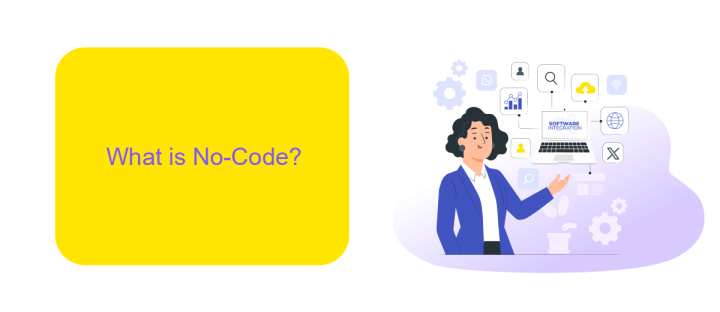No-Code vs Full Code
In the rapidly evolving tech landscape, the debate between No-Code and Full Code development has gained significant attention. No-Code platforms promise to democratize software creation, enabling non-developers to build applications without programming skills. Conversely, Full Code development offers unparalleled flexibility and control for seasoned developers. This article explores the strengths and limitations of both approaches to help you make an informed decision.
Introduction
The rise of No-Code platforms has revolutionized the way businesses approach software development. These platforms allow users to create applications without writing a single line of code, making technology accessible to a broader audience. Conversely, traditional Full Code development remains a staple for complex and highly customized solutions, requiring skilled developers to bring ideas to life.
- No-Code platforms enable rapid prototyping and deployment.
- Full Code development offers unparalleled flexibility and customization.
- No-Code tools often come with pre-built integrations, such as ApiX-Drive, to streamline workflows.
- Full Code solutions provide greater control over security and performance.
Choosing between No-Code and Full Code depends on various factors, including project complexity, required customization, and available resources. No-Code platforms, with their ease of use and built-in integrations, are ideal for startups and small businesses looking to quickly deploy solutions. On the other hand, Full Code development is best suited for enterprises needing tailored applications with specific requirements. Understanding the strengths and limitations of each approach is crucial for making an informed decision.
What is No-Code?

No-code is a development approach that allows users to create software applications without writing any code. This method leverages visual interfaces, drag-and-drop tools, and pre-built templates to simplify the development process. It is designed for non-technical users who want to build functional applications quickly and efficiently, without needing to learn programming languages. No-code platforms democratize software development, making it accessible to a broader audience, including entrepreneurs, small businesses, and individuals looking to prototype ideas.
One of the key advantages of no-code platforms is their ability to integrate with various services and tools seamlessly. For example, ApiX-Drive is a service that facilitates easy integration of different applications without requiring any coding skills. Users can automate workflows and synchronize data across multiple platforms effortlessly. This capability not only enhances productivity but also ensures that applications remain interconnected and functional, even as business needs evolve. Overall, no-code empowers users to bring their ideas to life with minimal technical barriers.
What is Full Code?

Full code development refers to the traditional method of software creation where developers write code manually using programming languages like Java, Python, or C++. This approach provides complete control over the application, allowing for high customization and optimization. Developers can build complex functionalities from scratch, ensuring that the software meets specific requirements and performs efficiently.
- High Customization: Full code allows for tailored solutions that precisely meet business needs.
- Performance: Manually written code can be optimized for better performance and scalability.
- Flexibility: Developers can integrate various third-party services and APIs, such as ApiX-Drive, to enhance the application's capabilities.
Although full code development offers numerous advantages, it requires significant expertise and time investment. Developers must have a deep understanding of programming languages, frameworks, and tools. Additionally, maintaining and updating the codebase can be challenging. However, for businesses that need highly customized and performance-oriented applications, full code development remains a preferred choice.
No-Code vs Full Code: Pros and Cons

No-code platforms enable users to create applications without writing any code, making them accessible to non-developers. These platforms offer drag-and-drop interfaces and pre-built templates, which significantly speed up the development process. On the other hand, full code development involves writing code from scratch, providing complete control over the application's functionality and design.
One of the main advantages of no-code platforms is their ease of use. They allow users to build applications quickly without needing extensive technical knowledge. However, they can be limited in customization and scalability. Full code development, while more complex and time-consuming, offers greater flexibility and the ability to create highly customized solutions.
- No-Code Pros: Quick development, user-friendly, cost-effective.
- No-Code Cons: Limited customization, scalability issues.
- Full Code Pros: High flexibility, complete control, scalable.
- Full Code Cons: Requires technical expertise, time-consuming, higher cost.
Choosing between no-code and full code depends on the specific needs of the project. For simple applications, no-code platforms like ApiX-Drive can be highly effective. For more complex, scalable solutions, full code development is often the better choice.
Conclusion
The debate between No-Code and Full Code solutions ultimately boils down to the specific needs and resources of a business. No-Code platforms offer a rapid, cost-effective way to develop applications without requiring extensive programming knowledge. This makes them ideal for startups and small businesses looking to quickly launch and iterate on their products. On the other hand, Full Code solutions provide unparalleled flexibility and scalability, making them suitable for larger enterprises with complex, custom requirements.
Integrating various services and automating workflows can be a challenge, regardless of the chosen approach. Tools like ApiX-Drive can bridge this gap by offering seamless integration capabilities, allowing both No-Code and Full Code solutions to connect with numerous third-party applications effortlessly. Ultimately, the choice between No-Code and Full Code should be guided by the specific goals, technical expertise, and budget constraints of the organization. By carefully evaluating these factors, businesses can select the most appropriate development path to achieve their objectives.
FAQ
What is the main difference between No-Code and Full Code development?
Can No-Code platforms handle complex projects?
Are No-Code solutions secure?
How do No-Code platforms integrate with other systems?
Is it possible to switch from a No-Code to a Full Code solution later?
Apix-Drive is a universal tool that will quickly streamline any workflow, freeing you from routine and possible financial losses. Try ApiX-Drive in action and see how useful it is for you personally. In the meantime, when you are setting up connections between systems, think about where you are investing your free time, because now you will have much more of it.

